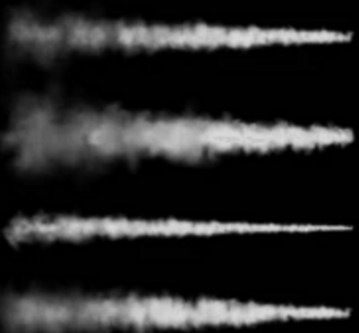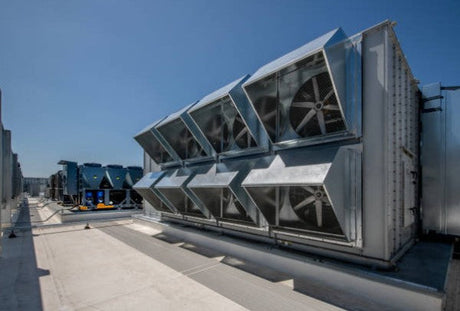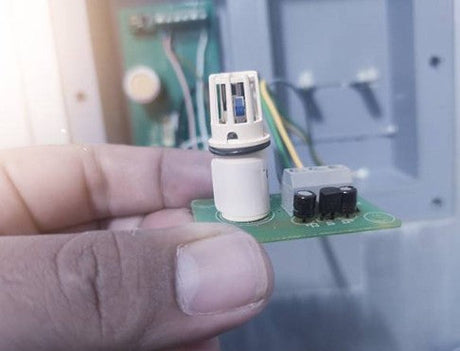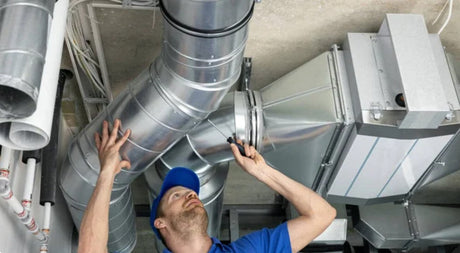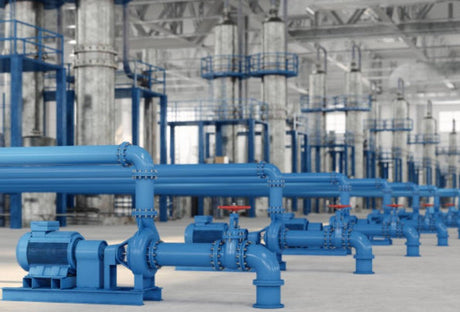Flow measuring devices are a critical part of many industrial processes and the accuracy of their measurements depends significantly on the correct positioning. The performance and efficiency of flow measuring devices is strongly influenced by two basic forms of flow: laminar and turbulent current. In the following article you will learn what the laminar and turbulent current characterizes how they affect measurements and how they can minimize problems with turbulent current in their systems.
Laminar current definition: ideal state for precision
The laminar current can be compared with an orderly water flow, in which each liquid layer moves undisturbed along its own track. There is no cross -mixture of the layers here and the speed of the particles remains constant, which leads to a stable flow profile. This phenomenon results in an optimal condition for flow meters because it enables precise and repeatable measurement results. The laminar current of water ensures a stable flow profile and thus enables precise and repeatable measurement results in flow measurement. Laminaries can be found, especially at low fluid speeds or in systems in which the river is disturbed by few obstacles such as valves or couplings.
Turbulent current definition: challenge for measurement technology
A turbulent current on the other side is characterized by irregular vertebrae and discomfort that shape the flow of a medium chaotic. It occurs when high flow speeds and interaction with installations such as disabilities are disturbed by valves, adapters or couplings. Flow -in measurement devices that are influenced by this form of flow can provide imprecise measurements, which can become a significant problem in the control technology.
Laminar and turbulent current: the difference
- High accuracy: Laminar current means fewer disturbances and therefore more reliable measurements, which is essential for precision in critical applications.
- Minimal pressure waste: The uniform currents cause less resistance and energy loss, which reduces the pressure drop above a flow meter and thus the energy consumption.
- Ideal for low flow rates: Laminar flow is particularly advantageous in scenarios in which low flow rates are measured, since turbulence mountains great potential for measurement errors.
LAminar and turbulent current determine with the Reynolds number
The Reynolds number helps you determine whether it is a laminar or turbulent current. It is unable to dimension and universally applicable, regardless of the unit system used. The Reynolds number supports in the assessment and prediction of flow behavior in different conditions, such as water and air dynamics. It is determined by the following four variables:
- Density of the fluid
- Speed of the fluid
- Diameter of the tube
- Dynamic viscosity of the fluid
The Reynolds number can be determined according to the following formula: Reynolds number (re) = (density x speed x pipe diameter) / dynamic viscosity
A low Reynolds number (≤ approx. 2300) signals a laminar current, while a high number (≥ approx. 3000) indicates turbulent current. In the transition area between these values, the current can have both features of a laminary and a turbulent current.
The critical Reynolds number in this context gives exactly the threshold of the Reynolds number, in which a flow state changes from Laminar to turbulent (typically at around 2300).
How to do the optimal installation situation of Floor measuring devices and Volume streamy devices the easiest way to determine in practice can be found in our counselor. The precise placement of flow guards is crucial for exact measurement results, since both laminar and turbulent currents influence measurement accuracy. Important aspects for optimal Assembly of flow guards And to minimize disruptive influences are treated in detail there.
Tips for minimizing the effects of turbulent current
It is crucial to protect flow measurements from the disturbing effects of turbulent currents in order to ensure the integrity and accuracy of their measurements. Here are some tips on how to adapt your systems:
- Optimize the installation situation
In order to minimize turbulence, unnecessary obstacles in the flow path should be avoided. If these components are necessary, a turbulence filter or rectifier can calm down the current and trace back to a laminar current.
- Consultation of the recommended insertion and outlet routes
For each flow meter, optimal inlet and outlet routes are specified in order to calm the current before the measurement. In particular, behind fans and pipe bends, it is advisable to adhere to sufficient distance from the measuring point and thus to ensure a measurement result that is as uniform as possible.
- Limit the flow speed
Note the recommended pipe length to moderate the speed at the inputs and outputs of the flow measuring instruments and thus switch from a turbulent to a laminar current.
- Implementation of turbulence filters
These specially developed filters help to smooth the flow pattern from a sensor and thus improve the accuracy of the measurements.
Application -specific aspects in laminar and turbulent flow
Note that depending on your specific process and using turbulent currents, different effects can have. In areas such as semiconductor production, they often have to be strictly avoided to ensure process stability. In other processes, such as high pressure, the effects can in turn be less significant.
It is essential to select the right flow meter for your application and to take into account how laminars and turbulent currents can affect performance. Our experts are at your disposal for deeper advice at any time.
New in our brochure: "6 errors in flow measurement and how to avoid them"
Discover the most common pitfalls of flow measurement, which can also undermine experienced experts. In our latest brochure, we illuminate critical mistakes that affect the accuracy of your measurement data and show practical solutions to avoid them. Regardless of whether you work in the installation, maintenance or in the operation of flow sensors, with this guide you can prepare for reliable flow measurement. Increase the efficiency of your applications by getting to know and learn how you can prevent common mistakes.
Innovative solutions from Seikom Electronic
Seickom Electronic offers with the Volume stream unit RLSW®9 A reliable solution for the precise flow measurement of gases even at high temperatures. The RLSW®9 can be used flexibly and is ideal for various industrial applications. It enables measurements at media temperatures up to 350 ° C and, thanks to its linear analog output and switch, offers control quality for precise control processes.

